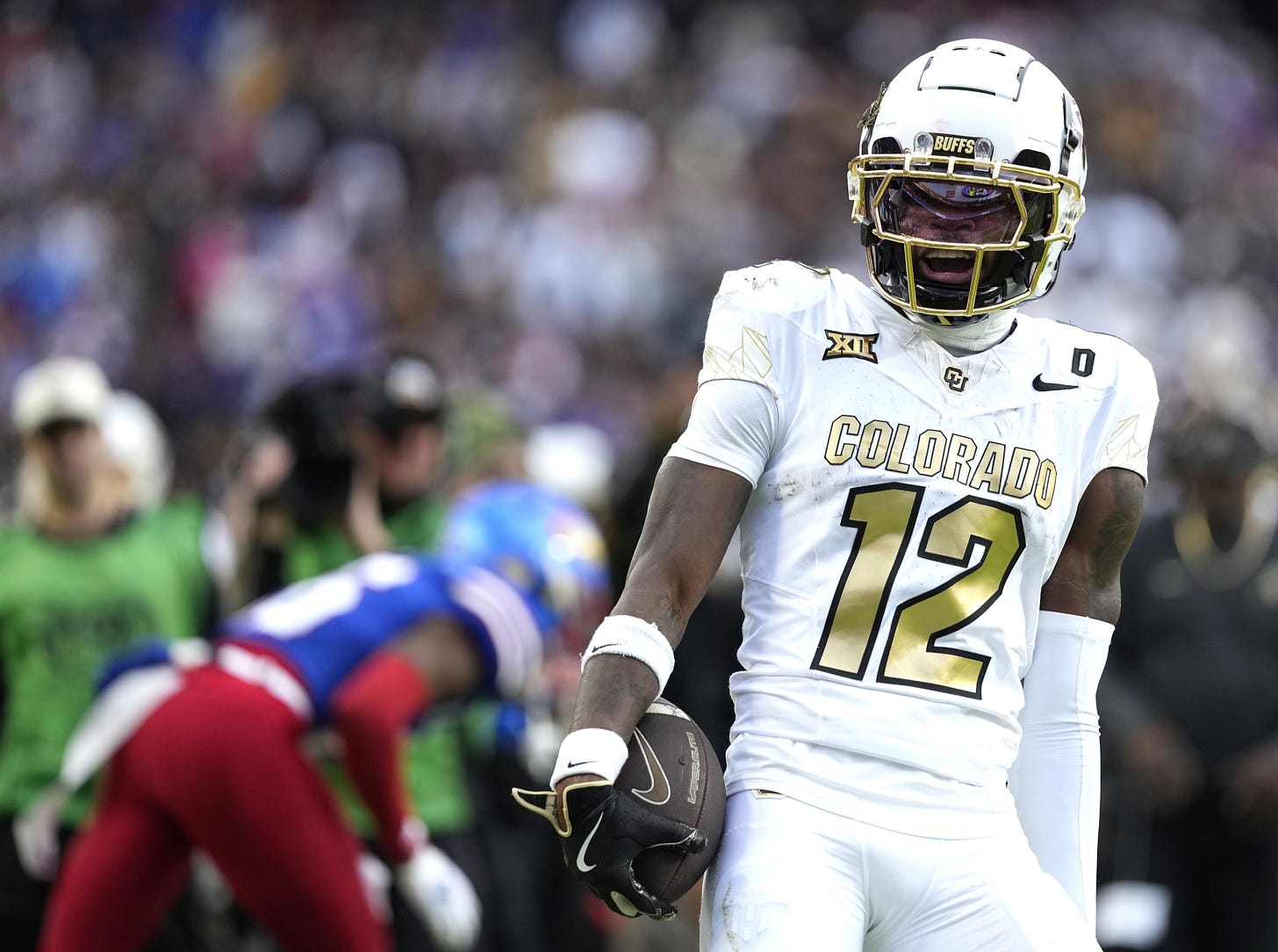How the NFL Draft Has Evolved — And What 2025 Tells Us About Football's Future
I tracked the NFL's positional power shift over four decades of draft data.

The NFL Draft is more than just an ordered list of the best college prospects in a given year. It is also a reflection of team-building philosophies, and maybe the clearest distillation there is of what teams find valuable — or feel like they can live without a big investment in. So when the Tennessee Titans send in their choice for the No. 1 overall pick tonight, followed by every other team’s own preferences, we will get a window into where general managers and coaches think the game is headed soon.
We can see this trend at work in reverse as well, by looking at how teams have changed where they allocated their draft capital over time. To that end, I gathered info from Pro-Football-Reference on every draft since 1980, grouping each player into one of 15 major positions and matching up their overall draft slot with Chase Stuart’s draft value chart, tracking what share of available draft investment was assigned to each position. Finally, I tracked this in rolling 5-year blocks to smooth out any yearly variations that may be based on individual talent availability in a given class.
With all of those explanations out of the way, here’s a look at those trends for each position over the past four decades of NFL Drafts:
Generally speaking, we can see that on offense, quarterbacks are up over time (no surprise!), running backs are way down — sadly, no surprise at all — receivers and offensive tackles have gained, guards have dipped a bit (though they’ve regained some investment since the early 2010s), and tight ends and centers are mostly flat over time. On defense, cornerbacks are way up — perhaps mirroring the rise of WRs across the line of scrimmage — defensive ends have gained some, linebackers of all types are down, and defensive tackles and safeties are all over the place.
(For those who care about kickers and punters, both specialists are slightly down from an earlier era, though they never commanded very much draft attention anyway.)
Another way of breaking down this data is to look at the most recent 5-year window of drafts (2020-2024) in comparison with other 5-year windows from the past:
By this long-term accounting, all of the passing-focused positions — CB, OT, WR, QB, and to some extent DE — have gained a great deal of value in the past 40 years of drafts, while those more focused on running the ball or stopping the run — S, OLB, ILB and especially RB — have lost the most.
But recent trends are interesting as well. As many times as we’ve seen record-breaking numbers of QBs taken early in recent drafts, it’s actually wide receiver and offensive tackle who have gotten the biggest boosts by far over the past five seasons. And while the project of RB devaluation hasn’t exactly let up, defensive tackles have seen the biggest drop-off over the past five years, despite being up relative to where they were four decades ago.
What about 2025, though? Are current big boards and consensus mock drafts aligned with these broader trends, or bucking them?
Certainly, the quintet of positions that teams have beefed up on in recent years will continue to be well-represented atop the Class of 2025. Each of the top four players in NFL Mock Draft Database’s consensus big board — QB Cam Ward, CB/WR Travis Hunter, EDGE Abdul Carter and OT Will Campbell — comes from those positions, depending on whether Hunter will be allowed to put on a Shohei Ohtani-like two-way show in the NFL. And beyond the absolute top picks, five OT prospects are in the consensus first round mock, as are five CB prospects and seven edge-rushers.
But other trends may not be as strong. A year after seeing six QBs come off the board in the first 12 picks, only three are projected to go at all in Round 1 — Ward, Hunter’s college teammate Shedeur Sanders and Ole Miss’ Jaxson Dart. If we consider Hunter a CB, even fewer receivers — just Arizona’s Tetairoa McMillan and Texas’ Matthew Golden — are set to go in the first round.
And at the same time, DT Mason Graham and RB Ashton Jeanty, representing the two most disrespected positions of recent drafts, are both tracking to go within the Top 6 picks.
Of course, those are just the biggest names that will be called during Round 1 tonight. We won’t get a complete sense for how teams are treating position value until the entire draft is in the books — and even then, things can jump around a lot in any given year. Two years before last year’s QB bonanza, only one passer (Kenny Pickett at No. 20) heard his name called in the first round. But the year before that, we had five QBs1 taken by the 15th overall pick. Go figure.
Still, every team making a pick tonight has dreams that these players will have a major role in winning future Super Bowls for the franchise. And clearly, front offices have ideas about which positions are more likely to contribute to that dream than others. In that sense, the draft is not only about individual players — it’s also a road-map to where the NFL thinks football is moving, one pick at a time.
Trevor Lawrence, Zach Wilson, Trey Lance, Justin Fields and Mac Jones. These QB runs early in the draft never cease to amaze me.




